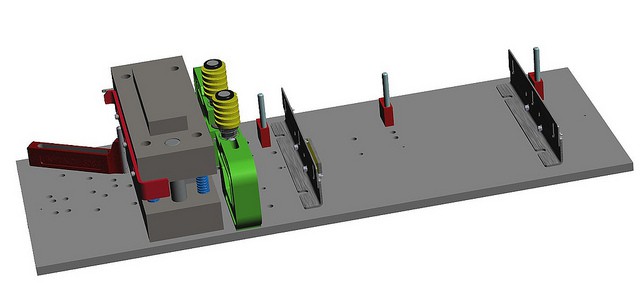Everything You Should Know About Aluminum Extrusion
Aluminum extrusion has seen substantial growth in application in product design and manufacturing over the past few decades. Although they are frequently a part of window or door systems, their uses are not limited to those. Aluminum bars are used in a wide variety of construction and manufacturing processes, so each product's quality must be unsurpassed.
Let’s see what aluminum extrusion is, the types of extrusion,
the different shapes of extrusion, and where they are used.
Using the aluminum extrusion method, an aluminum alloy can be
formed into an object with a clear cross-sectional profile for a variety of
functions. The special combination of physical properties that aluminum
possesses is best utilized during the extrusion process. Despite being
one-third the density and rigidity of steel, aluminum's flexibility makes it
easy to mill and cast, and the product offers durability and stability,
especially when mixed with other elements.
Different types of extrusion
There are two hot extrusions.
●
Direct extrusion
●
Indirect extrusion
Direct extrusion
The quickest production method is direct extrusion. The process
that is most frequently used to make aluminum extrusions is this one. In it,
the ram pushes the billet through the die hole while the die is stationary. The
forward or direct aluminum extrusion process is the name given to this
technique since the blade and rams both move ahead at the same time.
Indirect extrusion
In the indirect extrusion process, the component on the end of
the ram works against the blade while the billet itself remains immobile. By
doing this, the pressure required for aluminum to move through the die is
created.
This is the indirect press's principal benefit since it makes it
possible to press tougher metals and items with narrower cross-sections because
the smaller extrusion forces allow for lower pressing temperatures and, as a
result, higher extrusion speeds. In turn, productivity rises.
Different shapes can be extruded.
Extruded shapes fall into three broad categories:
●
Solid, no contained spaces or apertures.
●
Hollow, void-filled in some places.
●
semi-hollow, having a partially contained
void.
Where is aluminum extrusion used?
There are countless uses for aluminum extrusions in the
construction and manufacturing industries, including the creation of window and
door systems. The angled form, which we carry in simple mill finish,
pre-anodized, and pre-powder painted versions in black and white, is the most
common extrusion from ATC. These straightforward right-angled designs can have
sides that are equal in length or varied in length, and they can have various
wall widths.
Round tubes, square tubes, and rectangular hollows are a few of
the more common aluminum extrusions. Additionally, we offer solid pieces,
including square, round, and flat bars. For a large number of our clients, ATC
creates unique shapes. However, keep in mind that because of the expense of new
dies, aluminum extrusion should be viewed as a volume process.
Aluminum extrusion is the most versatile way of working with
aluminum in a manufacturing setting. Extrusion has been impacting the material
industry for many years, and it has contributed to numerous developments that
have affected the rest of the industry. In other words, aluminum extrusion is
not a technique used by an individual company or a group of companies — rather,
it is a method that affects every corner of the global manufacturing industry.



.jpg)
Comments
Post a Comment